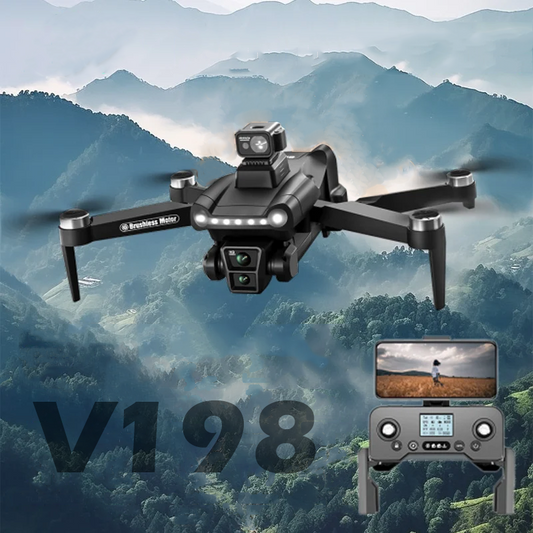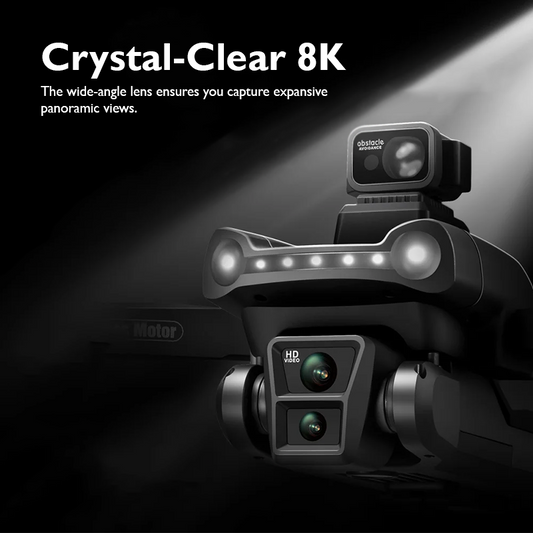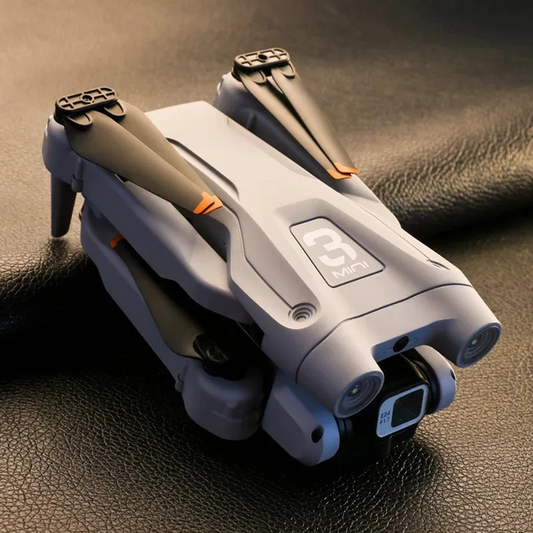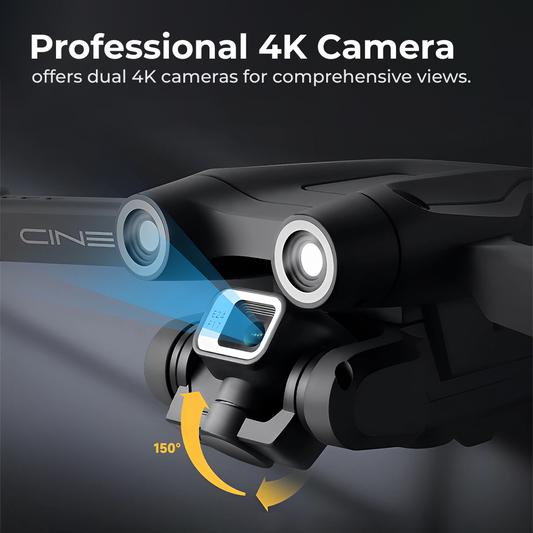Drone Camera Gimbal: Stabilize Your Aerial Footage

Drone camera gimbals are revolutionary tools that elevate aerial photography and videography. Whether you're a hobbyist capturing stunning landscapes or a professional filmmaker producing high-quality footage, a gimbal ensures smooth, stable, and cinematic results. But what exactly is a gimbal, and why is it essential for your drone setup? In this article, we delve into the workings, benefits, and features of drone camera gimbals, offering actionable tips and insights for choosing the right one. Let’s explore how these tools are transforming aerial footage quality and why they’re indispensable for enthusiasts and professionals alike.
How Drone Camera Gimbals Work to Stabilize Footage
A drone camera gimbal functions as a stabilizer, counteracting unwanted movements caused by external factors like wind, turbulence, or sudden drone maneuvers. These devices utilize brushless motors and gyroscopic sensors to detect and adjust the camera's angle, ensuring it remains level at all times. There are typically two types of gimbals: two-axis and three-axis. A two-axis gimbal stabilizes the camera along pitch (up-down) and roll (side-to-side) movements, while a three-axis gimbal adds stabilization along the yaw (left-right rotation) axis.
The precision offered by gimbals is what sets them apart. The sensors continuously calculate any tilts or shifts, and the motors adjust the camera's position within milliseconds, ensuring the footage remains smooth and steady. Without a gimbal, aerial footage often suffers from jitters, vibrations, and abrupt movements, making it unprofessional and hard to watch. Whether you're recording a fast-paced action sequence or capturing serene landscapes, a gimbal ensures that every frame is stable and visually appealing.
Why You Need a Gimbal for Capturing Aerial Footage
The importance of gimbals for drone photography and videography cannot be overstated. The primary reason for using a gimbal is the ability to produce high-quality footage, free of distortions caused by motion. Without a gimbal, even the most advanced drones struggle to deliver smooth results.
Gimbals are particularly beneficial for aerial photographers who want to create dynamic shots. Whether it’s a sweeping panoramic view or a close-up tracking shot, the stability offered by gimbals allows you to experiment with angles and compositions. Additionally, gimbals are invaluable for time-lapse and hyper-lapse footage, as they ensure consistent motion across frames. The result is professional-looking videos that captivate audiences and elevate your creative projects.
Moreover, drones equipped with gimbals are more versatile, as they can capture usable footage even in windy or unstable flying conditions. For professionals working in filmmaking, real estate, or surveying, a gimbal-equipped drone is a non-negotiable tool for achieving outstanding results.
Comparison of Two-Axis and Three-Axis Gimbals
| Feature | Two-Axis Gimbal | Three-Axis Gimbal |
|---|---|---|
| Stabilization Axes | Pitch, Roll | Pitch, Roll, Yaw |
| Footage Smoothness | Moderate | High |
| Best Use Cases | Casual Photography | Professional Videography |
Key Features to Consider When Choosing a Gimbal
Selecting the right Drone gimbal for your drone can significantly enhance your aerial footage. The first factor to consider is compatibility. Not all gimbals are universal, so it's essential to choose one designed for your drone model and camera. Secondly, check the payload capacity to ensure the gimbal can support your camera's weight without compromising performance.
Another critical feature is stabilization. For professional-grade results, a three-axis gimbal is recommended, as it offers superior smoothness and versatility. Build quality is equally important, especially if you plan to fly in harsh weather conditions. Look for gimbals made of durable materials like aluminum or carbon fiber, which offer excellent strength-to-weight ratios.
Lastly, consider the ease of use. Many modern gimbals come with advanced features like follow modes, time-lapse capabilities, and intelligent tracking. These features not only enhance creativity but also make the shooting process more efficient. By carefully evaluating these aspects, you can choose a gimbal that meets your specific needs and delivers exceptional performance.
Tips for Maintaining Your Drone Camera Gimbal
To ensure your gimbal performs optimally and lasts long, regular maintenance is essential. Start with proper calibration. Every gimbal requires periodic calibration to align its sensors and motors accurately. This ensures smooth operation and minimizes errors during flight.
Firmware updates are another crucial aspect of maintenance. Manufacturers frequently release updates to improve performance, fix bugs, and add new features. Make it a habit to check for updates and install them promptly. Additionally, inspect your gimbal regularly for signs of wear and tear. Loose screws, damaged wires, or worn-out parts can affect stabilization, so address any issues immediately.
Proper storage is equally important. Future of drones Always store your gimbal in a protective case to prevent damage from dust, moisture, or impacts. Avoid exposing it to extreme temperatures, as this can affect its electronic components. By following these maintenance tips, you can extend the lifespan of your gimbal and ensure it delivers consistent results.
Maintenance Checklist for Gimbals
| Maintenance Task | Frequency | Importance |
|---|---|---|
| Calibration | Before every flight | High |
| Firmware Updates | Monthly or as needed | High |
| Physical Inspection | Weekly | Medium |
| Proper Storage | After every use | High |
How Modern Gimbals Are Revolutionizing Drone Photography
The advancements in gimbal technology have brought significant improvements to aerial photography. Today’s gimbals are lighter, smarter, and more efficient than ever before. Many come equipped with intelligent modes like "Follow Me," which keeps the camera locked on a subject while the drone moves. These features open up new possibilities for creative storytelling.
Additionally, modern gimbals integrate seamlessly with drone software, allowing pilots to control camera angles, zoom, and focus directly from their remote controllers or smartphones. Some advanced models even use artificial intelligence to automatically adjust the camera's settings based on the environment, ensuring optimal footage quality in different lighting conditions.
As drone technology continues to evolve, gimbals are becoming an integral part of professional filmmaking, mapping, and even rescue missions. High-speed drones Their ability to stabilize cameras in extreme conditions has made them indispensable tools across various industries. The future holds exciting possibilities, including lighter designs, enhanced stabilization algorithms, and greater affordability, making professional-grade aerial photography accessible to all.
Drone Camera Gimbal
A drone camera gimbal is more than just an accessory; it’s an essential tool for capturing smooth, stable, and visually stunning footage. Whether you’re a hobbyist exploring aerial photography or a professional pushing creative boundaries, a quality gimbal can transform your projects. From understanding their mechanics to selecting the right features and maintaining them effectively, investing in a gimbal is a decision that pays off in the quality of your results.
By leveraging the advanced capabilities of gimbals, you can achieve professional-grade footage that captures the beauty and drama of aerial perspectives. As technology continues to advance, drone gimbals will remain at the forefront of innovation, helping creators unlock new possibilities and elevate their craft.
Discover the ultimate online drone store for high-quality drones, accessories, and expert advice to elevate your flying adventures with cutting-edge technology.









